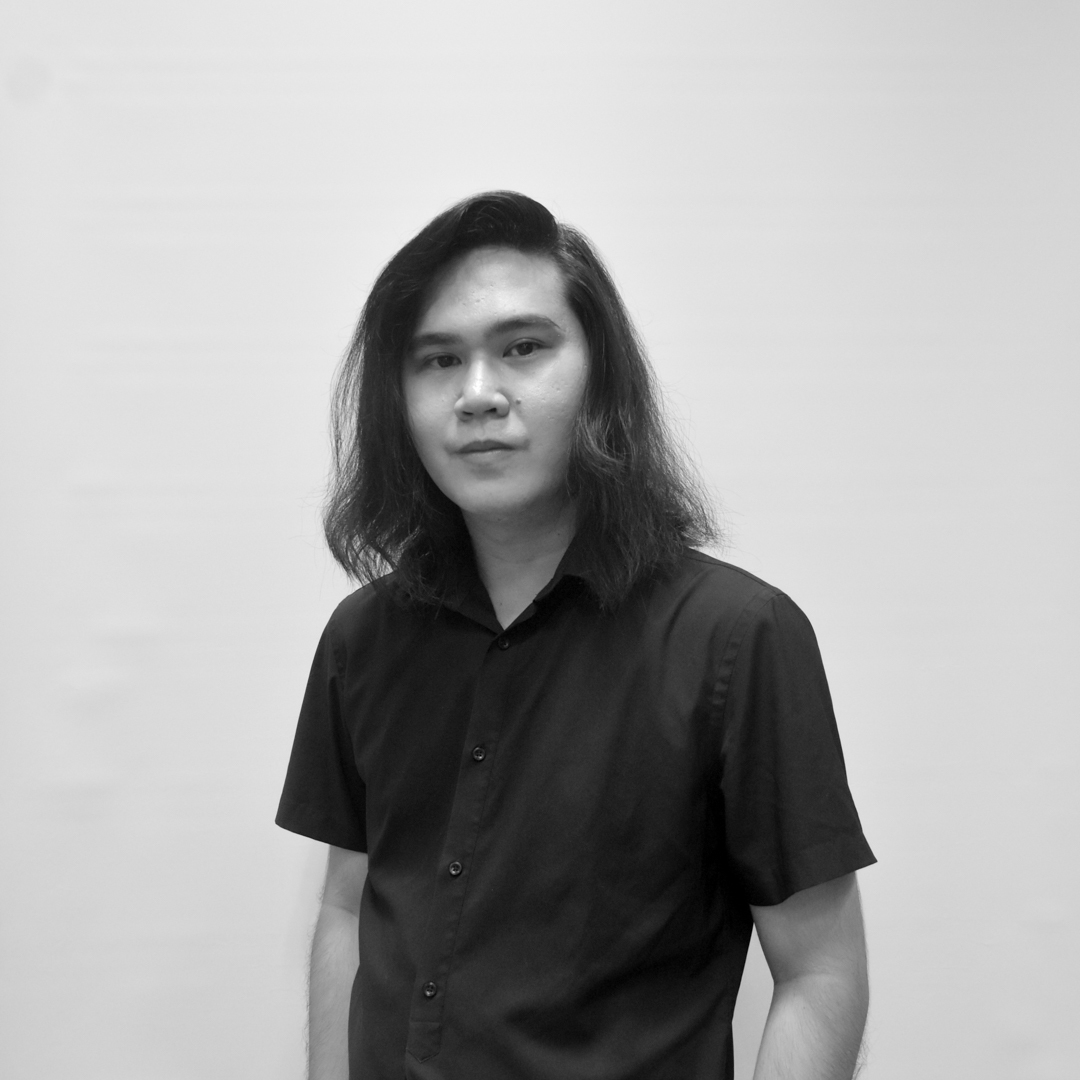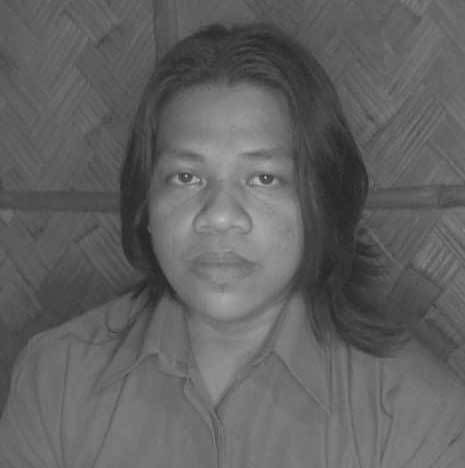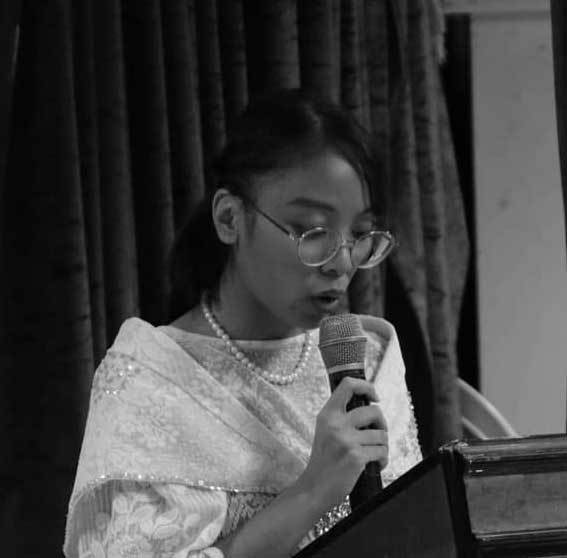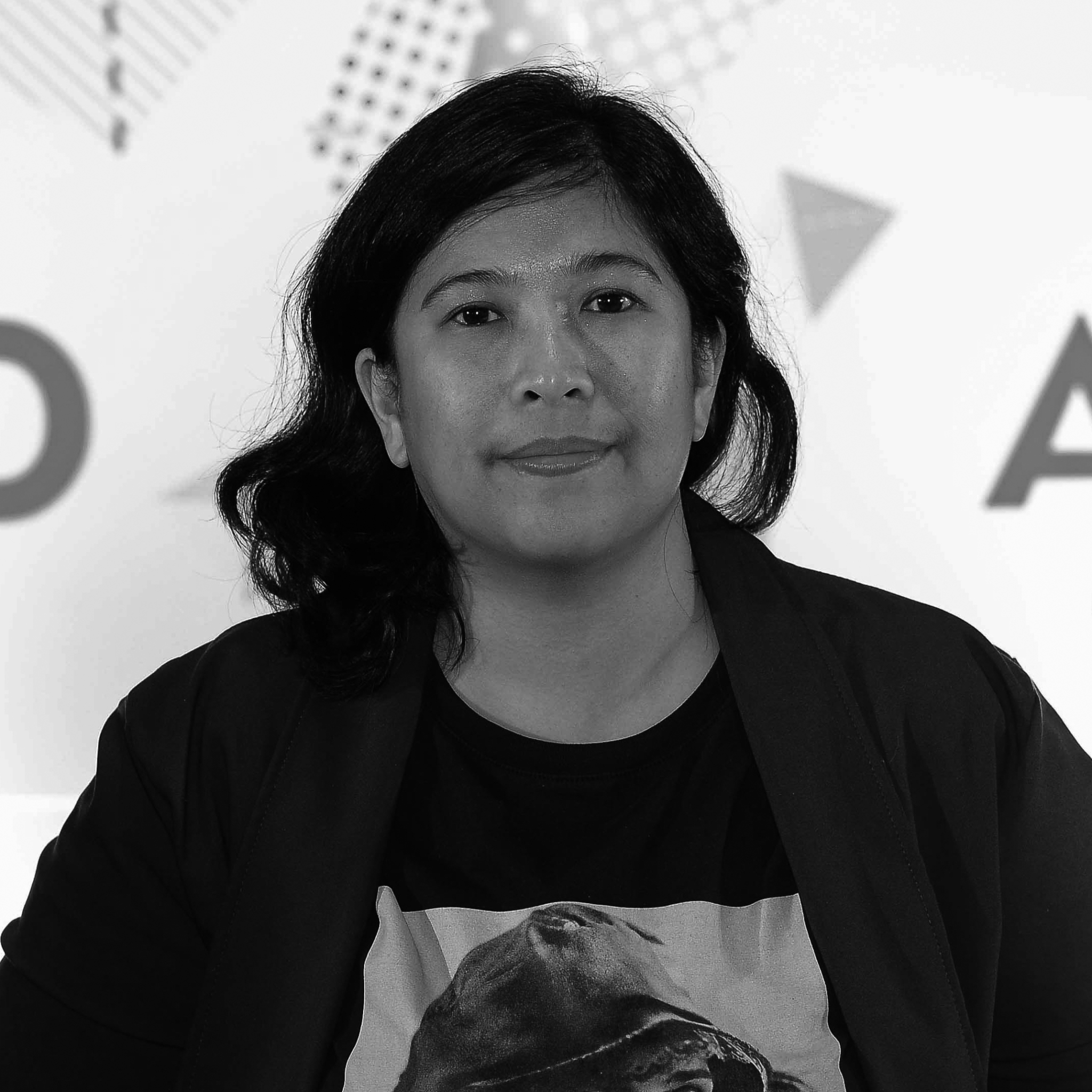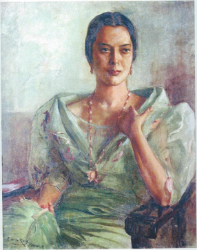Featuring editorial cartoons and paintings that span from the twilight years of Spanish imperialism, the heyday of American colonialism up to the upending of the Marcos regime, the Lopez Museum’s exhibition of political and propaganda art seems at once shrewdly deliberate and cautionary. Opening a day after the 30thanniversary of the “first” Edsa Revolt and closing well past the inauguration of the country’s newest president, Drawing Lines opportunely hints at the reflective and catalytic potential of old and new art coexisting at the cusps of social change.
Portraying two women traversing a flight of flower-strewn steps enveloped by clouds, Juan Luna’s Espana y Filipinasis a paean of collusion and implication as embodied by the Philippines and her “Mother Country”. Succouring Filipinas’ edifying progress, Espana points to a sun set on the same level as her eyes. Distinguished by tonal contrasts in complexion and by the primary colors of their finery, they are played against the subtler, pastel hues of the ground which, for its part, is presented as a dialectic of halves that sets off the solidity of their appointed path against the tenuity of the surrounding firmament. Diminishing perspective impels this rosy prospect insofar as the receding rectilinear regularity of the steps leads the eye to the point where perception dissolves into the nebulous yonder. To be sure, Luna’s fanciful vision is no castle in the air: with the lower flight of steps cut off by the frame itself, we are proffered the illusion that this stairway to the hazy unknown extends into our space and time, insinuating the viewer – whose perspective is set parallel to the picture plane – as a coequal participant in this ascent towards infinity. Luna’s light-filled allegory of sure-footed uncertainty is the obverse of his funereally tenebrous Spoliariumthat, in equal measure, simultaneously projected his ilustrado sympathy and ambivalence towards colonial tutelage.
That painting served as a prop of political ascendancy alongside cartoons and photojournalism is a truth further corroborated by Felix Resurrection Hidalgo’s now-destroyed work. Commissioned under the auspices of colonial PaxAmericana, Hidalgo’s apologue of otherworldly intervention proceeds by stipulating a nameless setting as its mise-en-scene; showing Filipinas offering an olive branch to her new conqueror, this cloud-borne epiphany posits no foothold for its subjects. Perspective again unlocks this parable suggestive of the Beatific Vision: so devised as to unravel the work’s contracting and expanding dynamic of massed figures captured in mid-motion, the picture field’s raised point of view aids the viewer in descrying the centripetal motive of figuration that seeks the center of brightness near the sword-toting Peace situated just below the observer’s line of sight. The downward propulsion from the upper half of this figure-eight composition is made possible by a funnel of flanking diagonals configured as a host of descending would be Muses on the left and a fluttering Stars and Stripes on the right. Buoyed by this swirling vortex is Liberty, apparently consubstantial with the clouds that enclose the seemingly weightless figures below her, themselves devoid of volume and individualizing features. Staged within a limited space like Luna’s, Hidalgo’s expansionist elegy nevertheless extends itself outside the frame: unseen in the boceto, the flame of the torch borne by Liberty is tangent to the arch of the frame, identifying her light with that of the sun.
Equally emblematic, Fernando Coching’s contemporary cartoonreprises this apotheosis of enlightenment on a smaller scale. Depicting Liberty bearing a torch and a horn of plenty, the work epitomizes colonially-bestowed independence as a square-jawed subject of Caucasian features clad in local garb suggestive of the country’s flag. This equivocal couching of a seemingly-foreign Kalayaan(Freedom) as Mother Country begs questions about the sociopolitical forces and mechanisms that have proliferated and legitimized projections of Filipino subjectivity and subjection under the aegis of Benevolent Assimilation. Was the Filipino body-politic to mimic its colonial master? Was the latter himself perhaps the touchstone of Filipinoness? Who, ultimately, benefitted from this devious doublespeak, and to what end?
Ironically, it is open-ended questions like these that political cartoons broadcast in their aim to unflinchingly speak truth to power. While it is customary for artists to resort to facile labellingand reductive allusions to folk iconographyin identifying incumbent social ills and inequities, there are those like Danilo Dalena who invest in ambiguity as a means of teasing out the nuanced heaving and tugging of mass movements and personal machinations. At first glance, what appears to be a concerted effort in toppling a tyrant’s Leviathan becomes upon closer inspection a precarious deadlock that, pulling in every direction, threatens to crush either of the diametrically-opposed groups enmeshed in Dalena’s compositional pyramid. One wonders how and when this taut and restive equilibrium will finally attain its breaking point, knowing that the internecine forces brought into play have become unrelenting. Dalena’s work compels us to reconsider a few imponderables that loomed over the country’s democratic descent of power a decade later: was the Edsa Revolution indebted to a powerful few or the many? Was the despot’s flight a gesture of capitulation or his dynasty’s ruse towards an unmolested return? Was it -- after all the hyping, huffing and puffing -- all for naught?
As with pictorial tropes, such untoward reversals are always waiting in the wings, however time-worn or commonplace they are. Itself sketching the many protean recurrences of artistic impetus, exhibits like Drawing Lines bring to the fore the theater of Art’s Janus-faced doublings, refractions and semblances. Both timely and timeless chroniclers of transition, the canvas and the cartoon deploy literal and figurative lines of engagement that efface or else make manifest the disjunctures that demarcate lived realities from their idealized representation, a work’s time-honored “intent” from the here-and-now of its interpretation and, finally, “cultural” from “political” art. This curatorial “retrospective” has not only interrogated such distinctions but also intimated Art’s capacity to delineate uncanny parallels between the signal upheavals of the past and the defining struggles of the present.



